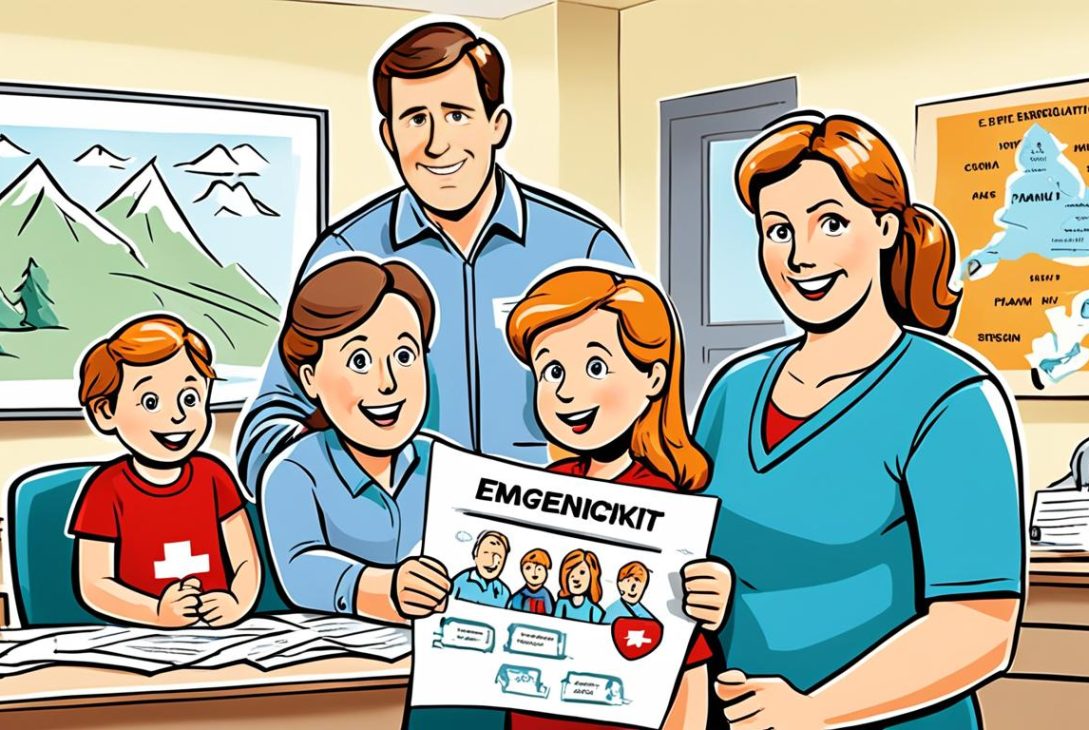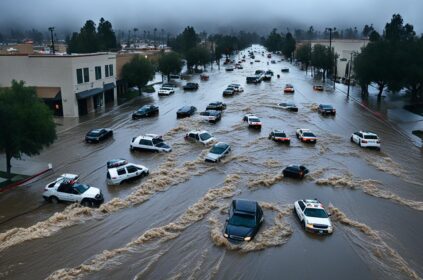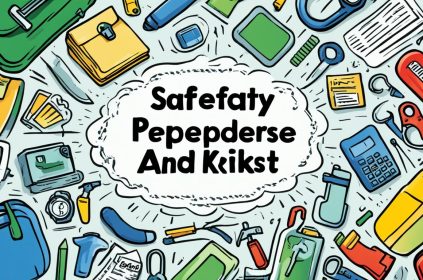Bad weather like winter storms, hurricanes, or blackouts can be tough. Especially for older adults and those with disabilities.1 They need to take extra steps to stay safe. This guide will help them make a plan for tough times. It offers tips and resources for being ready when bad weather hits.
Key Takeaways
- Emergencies and evacuations are more common than perceived, with hundreds happening each year due to various causes.1
- People living along the Gulf and Atlantic coasts often evacuate almost annually due to approaching hurricanes.1
- Comprehensive planning and emergency preparedness exercises are crucial for effective response and recovery.2
- Maintaining an emergency kit, creating a personal plan, and staying informed are essential for safety during disasters.2
- Collaborating with local authorities and community members can enhance overall emergency preparedness.2
Understanding the Necessity of Emergency Preparedness
Emergency preparedness is key for the safety of everyone, especially when natural disasters or unexpected emergencies hit. In 2022, the U.S. faced 119 natural disasters, showing why it’s so important to plan ahead.3 Older adults and those with disabilities may find it harder during these times. They might struggle more because of trouble moving around, keeping track of medicine, or thinking clearly.3
Prevalence of Natural Disasters in the United States
Natural disasters are happening more often and getting more severe in the U.S. This shows why being ready is important. From hurricanes to wildfires and more, these events can badly affect people, families, and where they live.3
Unique Challenges Faced by Older Adults and Individuals with Disabilities
Older adults and people with disabilities have special needs during disasters. Things like trouble moving, managing medicine, or cognitive issues can make it tough. They really need tailored plans and easy-to-reach help.3
Potential Risks and Impacts of Emergency Situations
We must know the risks and effects of emergencies to plan well. For instance, losing power, not being able to talk to others, or not getting needed supplies can be really serious. A good plan and covering all bases can reduce these risks. It keeps everyone safe.3
Creating a Personalized Emergency Plan
First, you need to make a plan that fits your own needs and abilities. It should cover things like if you have trouble moving, certain health needs, and how you like to talk to others.4
Assessing Individual Needs and Capabilities
Think about what you can do and what support you might need during an emergency. Look at how easy it is for you to move around, health needs, and if your place is easy to get into. Knowing this helps create a plan that’s right for you.4
Identifying Essential Contacts and Communication Methods
Include a list of important people and how to reach them in your plan. This can be family, friends, and doctors. Also, figure out the best ways to talk to others in an emergency. Have a few ways to do this in case one doesn’t work.4
Establishing Evacuation Routes and Shelter Options
Find different ways to leave your home and job if you need to, keeping in mind any problems you might have moving around. Also, know where you can go for safety, like shelters or staying with someone away from home.4
By making your own emergency plan, you can be ready for tough times and keep safe. Don’t forget to check and update your plan now and then. For more tips, Making a Personalized Emergency Plan has great info.
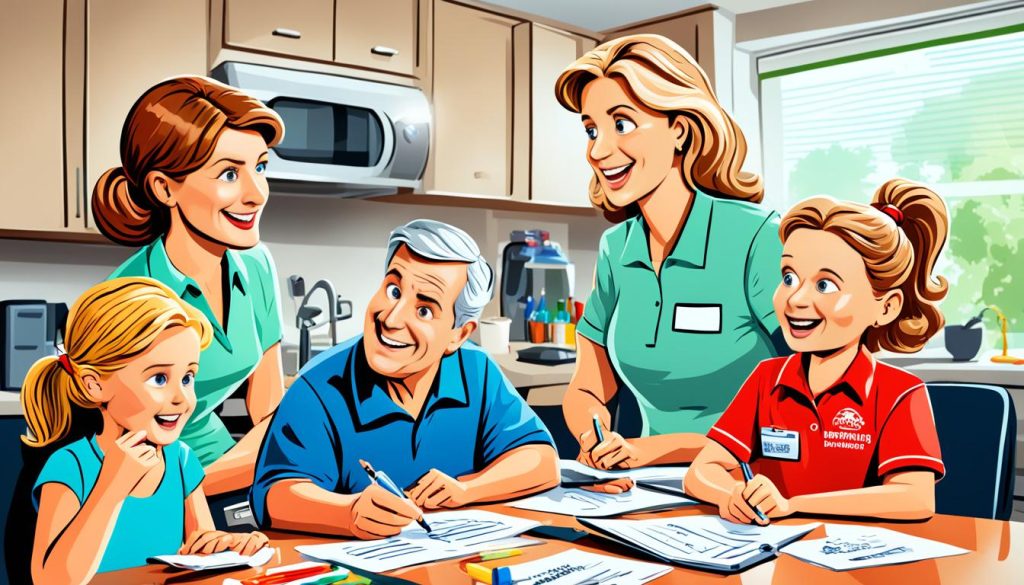
Assembling an Emergency Kit
Assembling an emergency kit is key for bad weather and blackouts. It should have supplies for three days: non-perishable food, water, a can opener, flashlights, warm clothes, and personal care items. Also, include a first aid kit, a way to communicate, and important papers.5
Non-Perishable Food and Water Supplies
Your kit needs many non-perishable foods.5 Keep one gallon of water per person each day.5 Make sure to check and switch out your food and water often.5
First Aid Essentials and Medications
A good first aid kit is a must for small injuries and sicknesses. Add over-the-counter drugs like pain relievers or antacids.5 Since half of the U.S. uses daily prescriptions, include those too.5
Emergency Communication Tools and Important Documents
Communication tools are crucial. Pack a radio, flashlight, and spare batteries.5 Also, bring family documents safely stored and money in case of need.5
Make a kit that fits your emergency needs. Don’t forget to check and update it often. Stay safe and prepared for anything with your kit.
Ensuring Accessibility for Individuals with Sensory Impairments
Hearing and vision problems can be more risky during an emergency. But, there are ways to make sure everyone gets the help they need. Specifically, the National Institute on Deafness and Other Communication Disorders points out that many older adults don’t seek help for hearing loss. Only about 30% of adults over 70 with hearing loss use hearing aids. This shows the big need to prepare for people with sensory impairments.
Addressing Hearing Loss and Visual Impairments
For those with hearing loss, having easy ways to communicate during emergencies is vital. This can mean using things like text-messaging pagers with weather alerts, captioning services, and relay services like CapTel and video relay services.6 On the other hand, for people with visual impairments, emergency info should be in formats like Braille, big print, or audio recordings.6
Utilizing Adaptive Tools and Mobile Applications
Adaptive devices and apps can be lifesavers during an emergency for people with sensory impairments. These range from flashing-light smoke alarms to emergency notification apps with text-to-speech and visual alerts.6 Using these technologies helps you to be informed and ready, crisis or not.
It’s crucial to make emergency help accessible to those with sensory issues. By meeting their unique needs and using special tools and apps, we can all be safer in a crisis.
Managing Stress and Chronic Health Conditions
Emergencies and natural disasters raise stress levels sharply. This is particularly hard for people with chronic health problems. Conditions like heart disease, high blood pressure, and diabetes can get worse. Stress can lead to depression and anxiety too.7 Women face more mental health issues from stress than men. This shows how stress impacts health differently based on gender.7
Impacts of Stress on Physical and Mental Well-being
High stress can make chronic diseases like asthma harder to manage. It can also make heart disease symptoms worse. Furthermore, it affects how well we think and make decisions.7 But, some people are more resilient to stress and can handle it better.7
Strategies for Reducing Stress During Emergencies
Having a solid emergency plan is key to lowering stress’s impact. This plan acts as a guide, making sure you don’t make mistakes from stress. It helps keep your mind on what needs to be done.7 Websites like the NIH Office of Research on Women’s Health offer tips on stress management. They also have chances to join stress-related health research.
If stress makes someone you know think about suicide, support is out there. The National Suicide Prevention Lifeline at 1-800-273-TALK (8255) is ready all the time to help.7 SAMHSA can help find mental health professionals at https://findtreatment.samhsa.gov. This is for anyone needing extra support due to stress.7 In times of crisis, the National Disaster Distress Helpline at 1-800-985-5990 offers support. This recognizes stress’s big impact during emergencies.7

Researching Local Disaster Risks and Emergency Response Resources
It’s important to know what disasters could hit your area.8 Common ones are hurricanes, wildfires, and earthquakes. Plus, severe storms and health crises are risks.8 The American Red Cross advises preparing for floods, extreme heat, and more, no matter where you are.
To find out about local disaster risks, contact your FEMA regional office or state emergency agency. They’ll share info on dangers in your area. This helps in making an emergency plan.8 In rural areas, health support might be scarce. There, often only small public health teams are available.8
Also, get to know the local emergency help, like fire and police.8 But, rural hospitals might have money issues. They and the local health teams might not be ready for big problems.8 Partnering with these groups can make a big difference in a crisis.
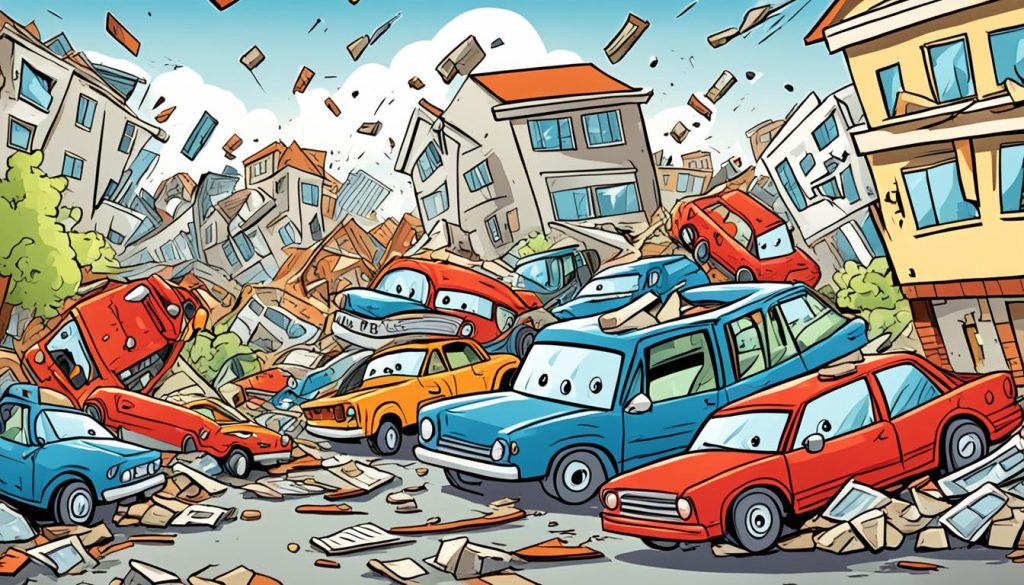
By checking for local disaster risks and help in your area, you can get ready better.8 This way, you and your family can be safer and stronger when faced with emergencies.
Staying Informed: Accessing and Interpreting Emergency Alerts
It’s vital to stay informed during emergencies for your safety. Knowing how to get and understand alerts is key. It helps you react well.9
Understanding Emergency Alert Systems and Notifications
Hawaii has systems like the EAS, WEA, and sirens to warn people.9 The EAS warns of immediate dangers,9 and WEAs send life-saving data to your phone.9 Sirens across Hawaii are also used in emergencies. They are tested often by officials.9
Utilizing Mobile Applications and Weather Radios
You can also stay tuned with apps and weather radios. The NOAA Weather Radio gives weather facts all day,9 and you can buy a radio at many stores for $20 to $80.9 The HNL.Info app from Honolulu is free and sends alerts during crises.9 Following the DEM and Red Cross of Hawaii on social media is smart for accurate news.9
10 WEAs reach phones in specific areas, using special sounds and vibrations. They work even when phone lines are busy. FEMA’s system sends these alerts.10 It’s good for parents to talk about WEAs with their kids. Alerts also go to children’s phones.10 Most big phone companies help send WEAs.10
10 The EAS alerts the whole country fast in big emergencies, like the President’s messages. It’s used for all kinds of important news, including bad weather.10 The NOAA Weather Radio is always on, giving weather info and warnings near you.10 The IPAWS lets all safety groups send out alerts at once.10
10 FEMA’s App is great for quick weather and emergency updates and helps find shelters.10 It also shows if you can get FEMA help.10 You can get weather alerts for up to five spots. It helps you find shelters and assess FEMA aid.10
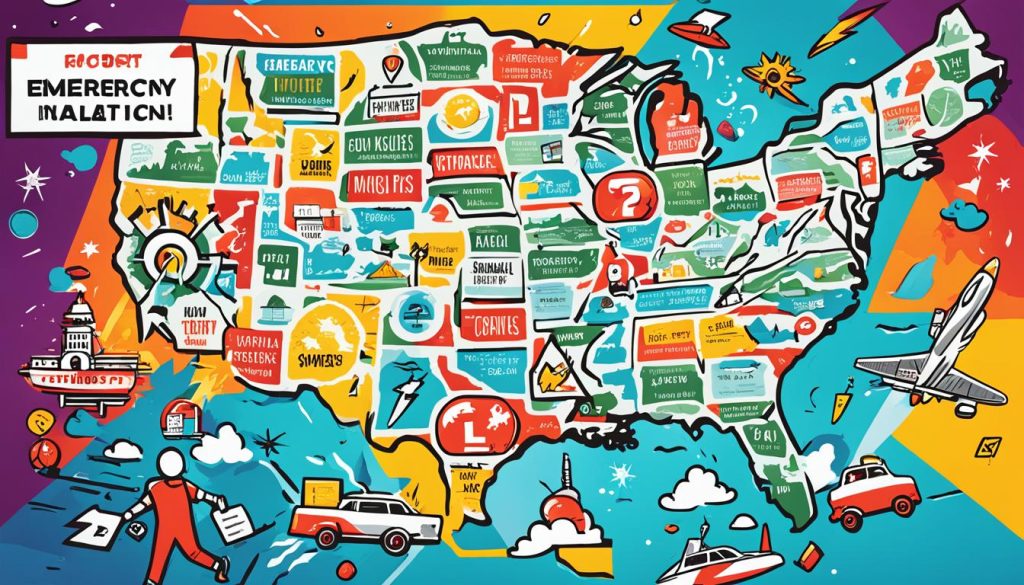
emergency Preparedness for Specific Scenarios
It’s key to know which disasters might hit your area. This helps you prepare better. Common emergencies are hurricanes, wildfires, earthquakes, severe storms, and public health issues.11 Everyone should also get ready for floods, heat waves, power outages, thunderstorms, winter storms, and CBRNEs (Chemical, Biological, Radioactive, and Nuclear emergencies) as the American Red Cross advises, no matter where you are.
Hurricanes and Severe Storms
Living in a place that often faces hurricanes or severe storms means you must plan ahead. Create a good hurricane preparedness and severe storm preparedness plan. This involves securing your house, collecting essential items, and being ready to leave if needed.
Wildfires and Evacuations
If wildfire danger is present where you live, having a wildfire preparedness plan is critical. Make sure your home has a safe area around it and prepare an evacuation bag. Be ready to evacuate fast when told to do so.
Earthquakes and Seismic Activity
In earthquake-prone areas, a earthquake preparedness plan is a must. Secure your home and set up a way to communicate with family. Practice the “drop, cover, and hold on” method so you’re ready for an earthquake’s reaction.
Collaborating with Local Authorities and Emergency Services
It’s vital to work closely with local authorities and emergency services for effective emergency planning. Make sure everyone knows their roles and stays in touch. This way, we’re all better prepared for crises.12
Partners in emergency response at the local level can range from emergency managers to medical officers. Even public information officers are key players.12 Think of groups like EMS, police, and aid organizations. They are all crucial local partner agencies.12
For health crises like outbreaks, public health agencies often step up.12 It’s important for rural communities to have strong partnerships. This way, emergency strategies are well-rounded and ready for action.12
In West Virginia, the Greenbrier County COVID-19 Task Force showed how different leaders can join forces.12 Here, even local businesses pitched in. They provided what was needed and proved how teamwork improves emergency responses.12
EMS and hospital associations at the state level are golden during emergencies.12 Meanwhile, bigger agencies like FEMA and HHS are lifelines at the top. They, along with groups such as AHA and NRHA, help make rural emergency readiness and response stronger.12
Don’t forget about the tribes. It’s essential for them to have good ties with state and local authorities.12 Several guides are out there to help everyone get ready for the worst.12
Practicing and Maintaining Your Emergency Plan
To keep your emergency plan effective, it’s crucial to practice and update it often.13 This means doing drills to find any weak points. And keeping your emergency supplies fresh is important too.13
Conducting Drills and Simulations
By practicing your emergency plan with drills and simulations, you get ready for real crises.13 For instance, evacuation plans should be practiced every month. Other strategies, like sheltering or lockdowns, should be reviewed yearly.13 Also, your staff should get involved in the planning. This makes sure everyone knows what to do when an emergency happens.
Updating Emergency Kits and Supplies
Always keep your emergency kit updated.13 Check food and medicine expiry dates. Change out batteries and restock when needed.13 And don’t forget to store vital information, like kids’ health records, in a secure place.13
Keeping your plan and supplies up to date helps you respond well to emergencies. It protects your program and the people in it.13
Empowering Your Community: Sharing Knowledge and Resources
Empowering your community through sharing knowledge and resources enhances community emergency preparedness.14 When everyone collaborates, you improve resilience. You also make sure access to information and support during crises is available to all.14
Decentralized emergency preparedness education boosts agility by using localized knowledge. This means you respond directly to your community’s needs.14 It forges a feeling of community ownership. It helps build a stronger social cohesion and makes emergency planning collaboration local.14
Working together by sharing resources makes the most of local resources. This means less reliance on outside help.14 You can create solutions that fit your community’s unique needs. This way, you strengthen your community’s resilience against disasters.14
Empower your community by sharing knowledge and working together on resources. This ensures everyone can handle emergencies.14 It’s key to making your community emergency preparedness strong. It helps your area be prepared and respond better when disasters strike.14
Caring for Service Animals and Pets During Emergencies
Having a plan for your service animals or pets during an emergency is key.15 Make sure you’ve got their food and water, ID tags, and vet records ready to go for emergencies.15 Places like shelters should not separate service animals from their owners and should give them extra care, too.15 And, hospitals must let service animals be with their owners if they have to be there.
If that’s not possible, the hospitals need to make sure the animals are cared for.15 In homeless shelters, they should also make room for service animals that help people with disabilities.
16 Sadly, just under 10% of pet owners in the U.S. have a plan that includes their pets for emergencies.16 But, if your pet is microchipped, they are much more likely to find their way back to you.16 Only 30% of pet owners have the right emergency supplies for their pets, though.
17 In 2006, the PETS Act was made to get pet owners to evacuate during disasters. Sometimes people stay because they can’t bring their animals.17 It’s key to work with health officials and vets to plan for animal disasters.17 Knowing how many pets and service animals are in an area is vital for planning.
16 Most shelters don’t allow pets, with less than 5% being pet-friendly.16 About 70% of pet owners don’t know where they’d go in an emergency. They lack a safe plan for their pets.16 The Humane Society says up to 80% of pets lost in disasters never find their way back because they weren’t identified.
To keep your service animals and pets safe, plan ahead for emergencies.16 Have plenty of food, water, and meds. Know where you can go and stay with your animals.16 Always be prepared.
Conclusion
Being ready for emergencies means thinking about what you’d need in a tough spot. Make a plan that fits just for you. Put together an emergency kit with all the essentials. Stay in the loop with info from easy-to-find sources. And don’t forget about friends and family who can help. This way, you’ll be better at handling tough times like when the power goes out or a winter storm hits.18
Helping groups who end up in the Emergency Department (ED) more often isn’t easy. But we’re working on better ways to help them. We’re looking at all the different parts of the problem. This makes our ideas smarter and more likely to work well without spending too much money.18
Getting ready for bad times helps you and your community be safer. It’s about making plans and working together. By sharing what you know and your stuff with others, you all become stronger. Then, when something bad happens, you’re ready to face it and bounce back.
FAQ
What are the most common types of emergencies that individuals should prepare for?
Why is emergency preparedness especially important for older adults and individuals with disabilities?
What are the key elements of a personalized emergency plan?
What should be included in an emergency kit?
How can individuals with hearing or vision impairments prepare for emergencies?
How can stress management and chronic health condition management improve emergency preparedness?
How can individuals stay informed about emergency alerts and notifications?
Why is it important to collaborate with local authorities and emergency services?
How can individuals maintain and practice their emergency plan?
How can individuals empower their community through emergency preparedness?
Source Links
- https://www.fema.gov/pdf/areyouready/basic_preparedness.pdf
- https://www.onlinemastersdegrees.org/student-resources/emergency-preparedness/
- https://www.osha.gov/emergency-preparedness/getting-started
- https://news.caloes.ca.gov/making-a-personalized-emergency-plan/
- https://www.ready.gov/kit
- https://www.utsa.edu/disability/policies/Readiness-Tips-Sensory-Disabilities-2018.pdf
- http://orwh.od.nih.gov/in-the-spotlight/all-articles/7-steps-manage-stress-and-build-resilience
- https://www.ruralhealthinfo.org/topics/emergency-preparedness-and-response
- https://www.honolulu.gov/dem/preparedness/stay-informed.html
- https://www.ready.gov/alerts
- https://www.georgefox.edu/emergency-response-plan/scenarios.html
- https://www.ruralhealthinfo.org/toolkits/emergency-preparedness/1/partners-collaborators
- https://www.virtuallabschool.org/tcs/safe-environments/lesson-5
- https://disasterempire.com/emergency-management/empowering-communities-the-case-for-decentralized-emergency-management/
- https://adata.org/service-animal-resource-hub/emergencies
- https://www.ready.gov/pets
- https://www.fema.gov/cbrn-tools/key-planning-factors-bio/kpf-4/4
- https://www.ncbi.nlm.nih.gov/books/NBK547129/
Disaster planning Emergency kit essentials Emergency Preparedness Peace of mind strategies Safety tips
Last modified: May 24, 2024


